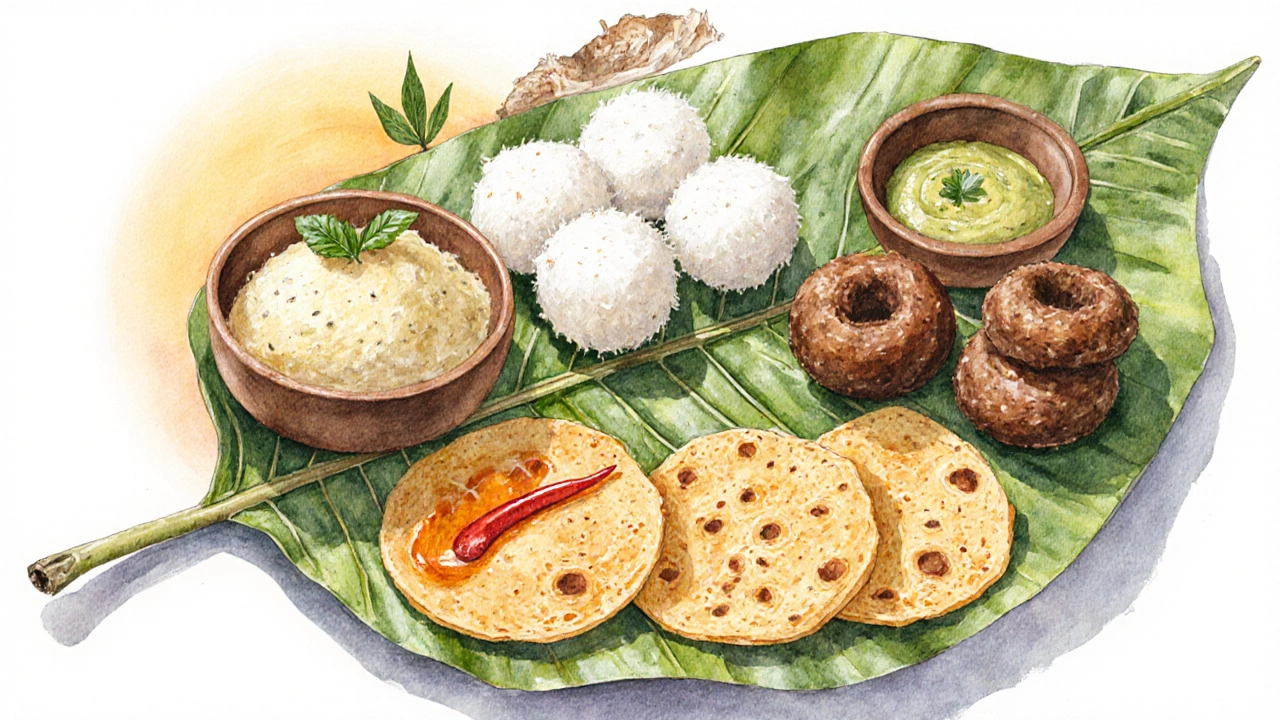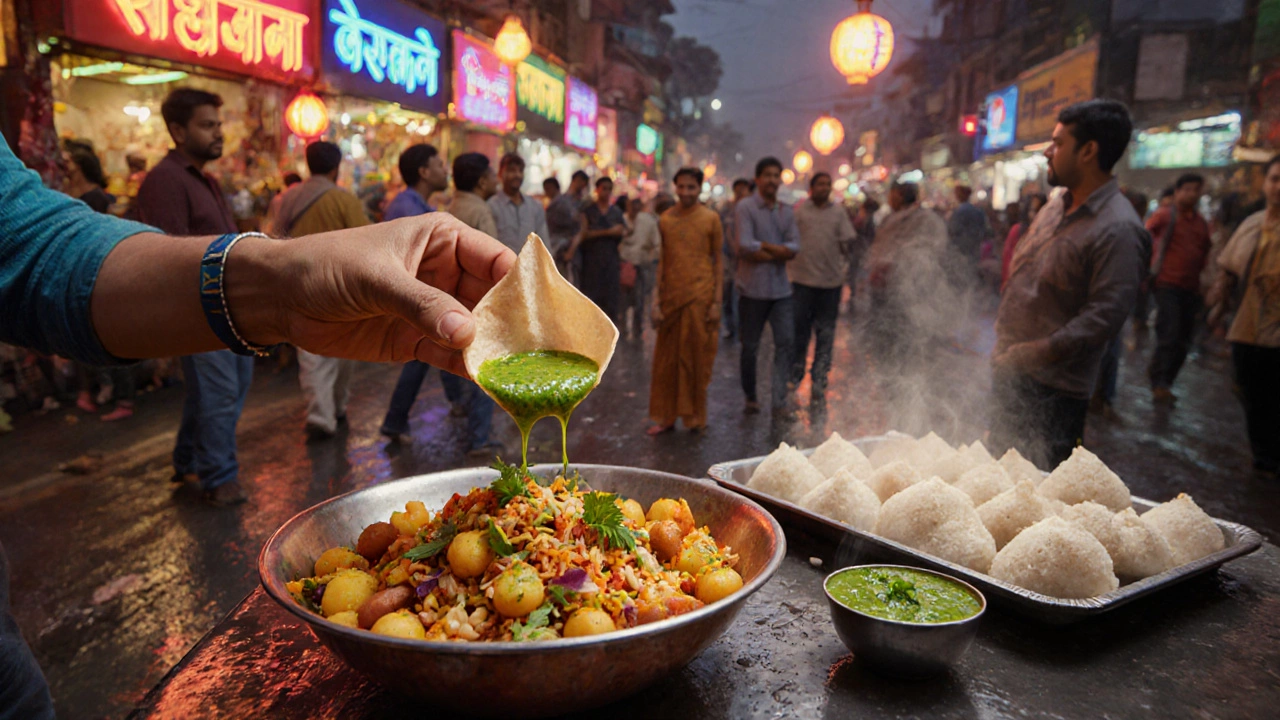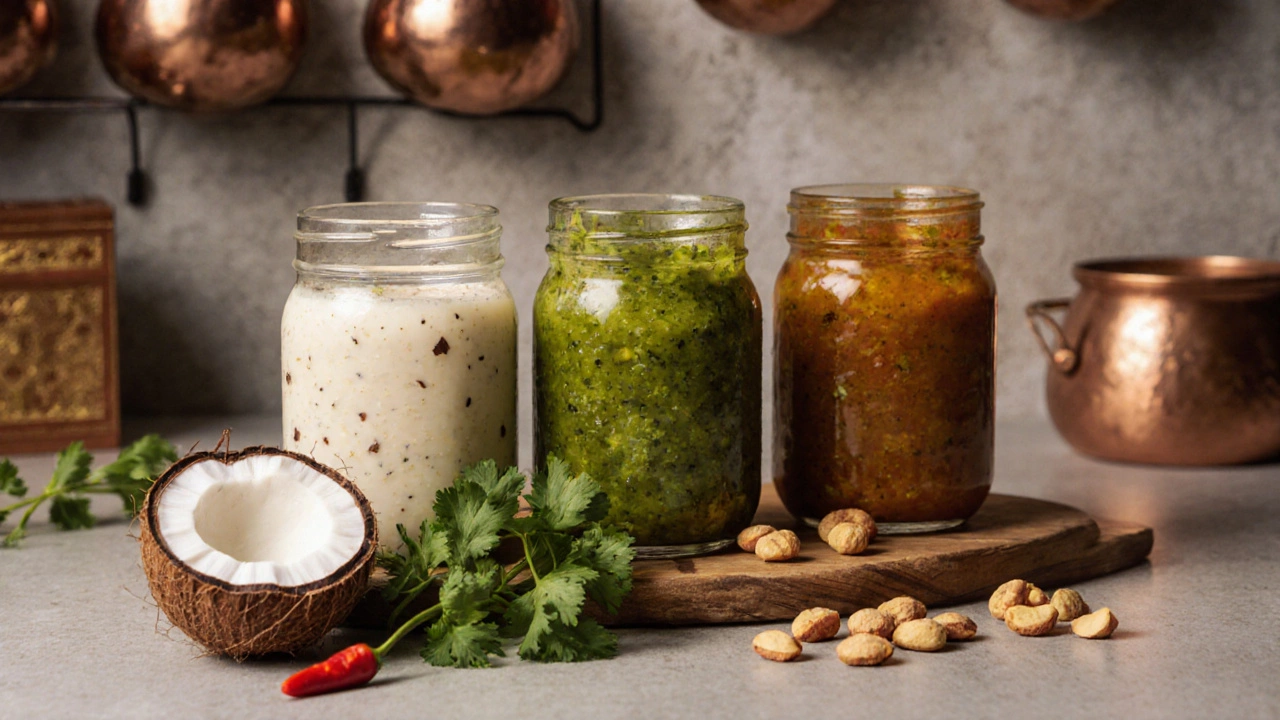Chutney Pairing Guide
Find Your Perfect Chutney Pairing
Discover the traditional chutney that perfectly complements your favorite Indian dish
Chutney is a vibrant Indian condiment made from herbs, spices, fruit or vegetables, blended into a smooth or chunky sauce. It can be fiery, sweet, tangy, or nutty, and it lives on every Indian kitchen shelf. If you’ve ever wondered Indian chutney belongs on more than just a side plate, you’re in the right place. Below we’ll map out the most common dishes that Indians eat with chutney, how regional habits differ, and practical tips for serving it at home.
Why Chutney is a Kitchen Essential
Chutney isn’t just a flavor booster - it balances textures, cuts through richness, and adds a fresh punch to heavy gravies. In the south, a drizzle of coconut‑groundnut chutney brightens the soft bite of fermented batter foods. Up north, a tangy mint‑coriander sauce lifts fried samosas, while a sweet‑sour tamarind chutney pairs perfectly with crunchy chaat. The common thread is that chutney acts as a bridge between the main dish and the palate, making each bite feel complete.
South Indian Pairings
South Indian cuisine revolves around rice‑based batters, lentils, and fermented products. Here are the top dishes that almost always arrive with a side of chutney.
- Dosa is a thin, crispy crepe made from fermented rice and urad dal batter. It’s traditionally served with coconut chutney, tomato chutney, and sometimes a spicy red‑chili chutney.
- Idli is a soft, steamed rice‑lentil cake. A mild coconut‑groundnut chutney or a zingy sambar‑chutney combo is the norm.
- Vada is a deep‑fried lentil doughnut, crispy on the outside and fluffy inside. It pairs with coconut chutney and a drizzle of sambar, creating a sweet‑spicy balance.
- Pongal is a comforting rice‑lentil porridge often flavored with cumin and pepper. A dollop of ginger‑coconut chutney lifts its mild flavor.
In Kerala, many households also serve appam (rice flour pancakes) with a thick tomato‑onion chutney. The key in the south is the coconut base - it adds a creamy texture that balances the heat of chilies.

North Indian Pairings
North Indian meals feature wheat breads, rich gravies, and fried snacks. Chutney here leans more toward herb‑based or tamarind‑sweet profiles.
- Samosa is a triangular pastry filled with spiced potatoes and peas. It’s usually dipped in green mint‑coriander chutney or tangy tamarind chutney.
- Pakora is vegetables or paneer coated in chickpea flour and fried until golden. A side of fresh coriander‑mint chutney adds coolness to the hot bite.
- Paratha is a layered flatbread cooked on a griddle, often stuffed with potatoes or cauliflower. A spoonful of sweet‑spicy mango chutney makes it a hearty breakfast.
- Chaat is a street‑food mix of crisp fried dough, potatoes, chickpeas, and spices, finished with chutneys and sev. Both mint‑coriander and tamarind chutneys are drizzled on top for that signature tang.
In Punjab, you’ll often find a thick, sweet mango or date chutney accompanying the evening snack of “chaap” (spiced meat) or buttery naan, demonstrating how chutney can double as both dip and sauce.
Pan‑Indian Street‑Food Classics
Street vendors across India use chutney to turn simple ingredients into crowd‑pleasers.
- Bhel Puri is a crunchy puffed‑rice snack mixed with vegetables, peanuts, and tangy sauces. A generous splash of tamarind chutney gives it that iconic sweet‑sour kick.
- Pani Puri is hollow crisp shells filled with potatoes, chickpeas, and a mix of spicy water and chutney. The “pani” often includes a hint of coriander‑mint chutney for freshness.
- Dhokla is a soft, steamed gram‑flour cake from Gujarat, typically served with green chutney. The light texture is balanced by the sharp herbaceous flavor.
Even outside India, the diaspora carries these pairings. In Auckland’s Little India precinct, you’ll find the same chutney‑drizzled chaats that make them “authentic”.

How to Serve Chutney at Home
- Pick the base: Coconut for south, mint‑coriander for north, tamarind for sweet‑sour.
- Balance the flavors: Aim for a 2:1:1 ratio of sour‑sweet‑spicy, adjusting to taste.
- Adjust texture: Blend to a smooth paste for dipping; keep it chunky for spreads on rotis.
- Serve at room temperature: Chutney tastes flat when cold; a quick warm‑up brings out aromatics.
- Store wisely: Refrigerate in a glass jar; most chutneys last 5‑7 days, longer if oil‑based.
If you’re preparing a mixed platter, place a small bowl of each chutney next to the dishes. This lets guests mix and match, just like you’d find at an Indian banquet.
| Dish | Region | Preferred Chutney |
|---|---|---|
| Dosa | South | Coconut‑groundnut chutney, Tomato chutney |
| Idli | South | Coconut‑coriander chutney, Sambar |
| Samosa | North | Mint‑coriander chutney, Tamarind chutney |
| Pakora | North | Green herb chutney |
| Paratha | North | Mango or Date sweet chutney |
| Bhel Puri | Pan‑Indian | Tamarind chutney |
| Pani Puri | Pan‑Indian | Mint‑coriander chutney mixed into water |
Frequently Asked Questions
Can I use the same chutney for both South and North Indian dishes?
Yes, many chutneys are versatile. A simple cilantro‑mint chutney works well with dosa, samosa, and even grilled kebabs. Adjust the heat level to suit the dish.
What’s the fastest chutney I can make for a party?
Blend a handful of fresh cilantro, a few mint leaves, green chilies, lemon juice, salt, and a splash of water. It’s ready in under five minutes and pairs with most finger foods.
Is chutney a side dish or a condiment?
Both. In everyday meals it behaves as a condiment, but in special occasions it can take center stage, like a mango chutney glaze for roasts.
How long does homemade chutney last?
Stored in an airtight glass jar in the fridge, most chutneys keep for 5‑7 days. Oil‑based versions (like peanut‑coconut) can stretch to two weeks.
Which chutney pairs best with rice‑based dishes?
For plain rice or curd rice, a thin coconut‑coriander chutney or a mild tamarind‑date chutney adds flavor without overwhelming the grain.
